|
Caring for Antique and Vintage Leather Sporting Goods
by
Bob Brooke
Leather is timeless. Many antique pieces of sporting equipment were made
of it in whole or part. But just because leather is famously durable
doesnít mean that it shouldnít be given some care. To ensure that
leather sporting goods have a long life, itís vital to regularly clean
them and perform some light maintenance.
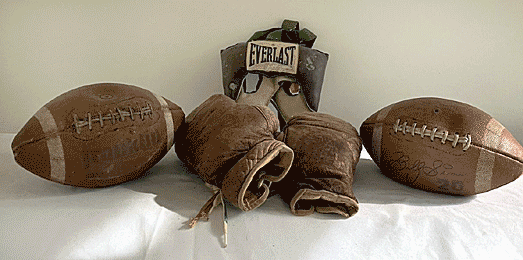
While staining or damage can occur time, they form part of an itemís
history. With proper care, high-quality leather develops a coveted
patina over time that only enhances its beauty and value.
Handle With Clean Hands
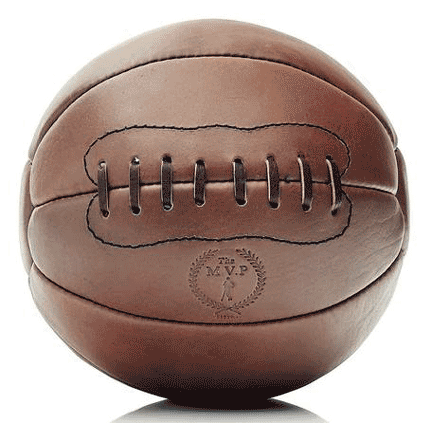 The
natural oils from human skin will gradually discolor leather over time,
so itís a smart idea to keep your hands clean when handling your most
precious products. Body oils encourage the further aging of leather, so
itís important to keep contact with them at a minimum. Wearing white
cotton gloves while handling western leather sporting goods. may also
help. The
natural oils from human skin will gradually discolor leather over time,
so itís a smart idea to keep your hands clean when handling your most
precious products. Body oils encourage the further aging of leather, so
itís important to keep contact with them at a minimum. Wearing white
cotton gloves while handling western leather sporting goods. may also
help.
Wipe Away Dust
Dust has a way of drying out the surface of a leather, so itís a good
idea to periodically dust leather products. Not only will this protect
the oils in the leather, but it will help to create longevity.
Gently dusting with a specialized vacuum nozzle before dust accumulates
prevents abrasion damage from particles. Monitoring for insect pests
through periodic inspection also avoids harm.
More than anything, itís important to keep your leather clean. Try to
brush it down with a damp cloth at least once a week. Use a damp cloth.
Start by brushing off any dirt of grime from the leather with your hand,
then switch to a damp cloth. Do not use any soaps or cleansers. Then let
the leather dry slowly.
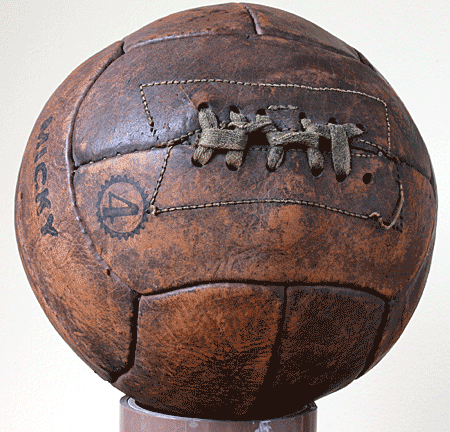 Clean
stains as soon as possible. Remove them as soon as you spot them to
prevent extreme discoloration. For minor stains, use a mild solution of
three parts ivory dish soap to one part distilled water for minor
stains. However, leather corrects itself over time, so even marks that
seem major will eventually contribute to the overall patina. Clean
stains as soon as possible. Remove them as soon as you spot them to
prevent extreme discoloration. For minor stains, use a mild solution of
three parts ivory dish soap to one part distilled water for minor
stains. However, leather corrects itself over time, so even marks that
seem major will eventually contribute to the overall patina.
For faded leather, use a conditioner, as it will rehydrate and
reintroduce oils into the leather. If the leather has stains, apply
conditioner not only to the stains, but to the entire piece.
Conditioning leather will darken it, so consider that before doing it.
Apply the conditioner, let it sit for a few minutes, then wipe off the
excess.
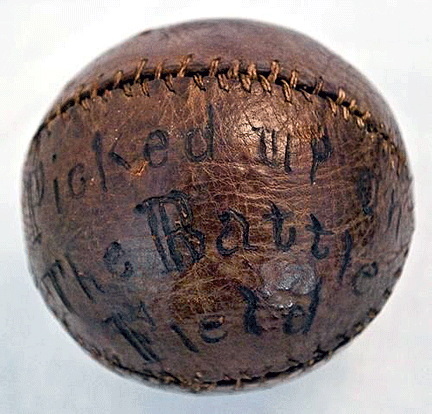 Just
like your skin, leather needs to breathe, so after you have finished
dusting your jacket, leave it to air out before storing it again.
Leather is meant to change as it gets older, and itís through this aging
that its true value becomes apparent. Just
like your skin, leather needs to breathe, so after you have finished
dusting your jacket, leave it to air out before storing it again.
Leather is meant to change as it gets older, and itís through this aging
that its true value becomes apparent.
Knowing about leather preservation is essential to protect the
investment.
Following a basic preservation plan can stabilize the structure and
moisture content of leather artifacts and arrest or slow the rate of
deterioration. Once leather becomes brittle and begins to crack, its
condition cannot be reversed.
The Enemies
of Leather―Humidity,
Sun, and Pollution
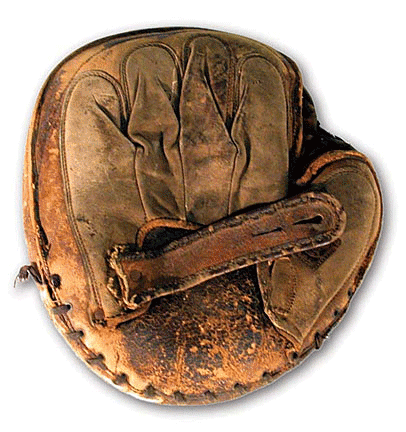 Humidity,
sun exposure, pollution, and insects accumulated over decades impact
antique leather far beyond normal wear and tear. Fluctuating humidity
levels irreparably warp leather as moisture causes expansion and
contraction. Maintaining as close to a consistent 65 F degrees and 45
percent relative humidity where items are displayed or stored. At high
humidity levelsómore than 70 percent relative humidityóleather absorbs
moisture, which can lead to biological infestation and microbic
deterioration such as mold and bacteria growth. At low humidity
levelsóless than 25 percentóleather begins to dehydrate permanently,
leading to shrinkage and deformation. Once dehydrated, the leather
begins to weaken, lose flexibility, crack and check. Humidity,
sun exposure, pollution, and insects accumulated over decades impact
antique leather far beyond normal wear and tear. Fluctuating humidity
levels irreparably warp leather as moisture causes expansion and
contraction. Maintaining as close to a consistent 65 F degrees and 45
percent relative humidity where items are displayed or stored. At high
humidity levelsómore than 70 percent relative humidityóleather absorbs
moisture, which can lead to biological infestation and microbic
deterioration such as mold and bacteria growth. At low humidity
levelsóless than 25 percentóleather begins to dehydrate permanently,
leading to shrinkage and deformation. Once dehydrated, the leather
begins to weaken, lose flexibility, crack and check.
Air conditioning keeps humidity levels below 60 percent. Cold air, on
the other hand, cannot hold as much moisture as warm air, and humidity
levels in winter months can be dangerously low. In addition, fireplaces,
central heat, space heaters, and radiators can suck what little moisture
remains from the air, making winter a prime time for leather
deterioration. Excessive heat can dry out leather and reduce its tensile
strength which leads to cracking and splitting. Even in ideal
conditions, slow chemical breakdown of fats and tannins causes leather
to grow brittle and discolored over centuries. Oxidation cannot be
halted, only slowed.
 Both
ultraviolet and visible light can cause irreversible color and
structural changes to leather. Prolonged exposure to both forms can
result in photodegradation, the fading of the pigments and dyes within
leather. Over time this can bleach out the color of an artifact and
cause differential fading on the surfaces of objects that are unequally
lit. Not only does sunlight generate heat that can dry out leather, itís
also the primary natural source of UV radiation. UV radiation oxidizes
collagen and breaks down the structural bonds of leather. LED lights are
more energy efficient than incandescent and compact fluorescent bulbs
and generate practically no heat or UV radiation. Both
ultraviolet and visible light can cause irreversible color and
structural changes to leather. Prolonged exposure to both forms can
result in photodegradation, the fading of the pigments and dyes within
leather. Over time this can bleach out the color of an artifact and
cause differential fading on the surfaces of objects that are unequally
lit. Not only does sunlight generate heat that can dry out leather, itís
also the primary natural source of UV radiation. UV radiation oxidizes
collagen and breaks down the structural bonds of leather. LED lights are
more energy efficient than incandescent and compact fluorescent bulbs
and generate practically no heat or UV radiation.
Proper Presentation is Important
Though proper preservation practices can greatly extend the life and
maintain the appearance of antique leather sporting items, all leathers
will stiffen and lose flexibility. Proper support is critical to
preserving the artifact's shape and minimizing stress on the leather
fibers. Once an artifact has reached a moderate degree of dryness,
altering its static shape is nearly impossible.
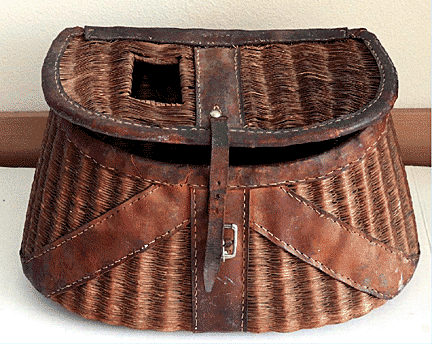
Once vintage leather goods receive any needed conservation, maintaining
ideal display and storage conditions prevents further unnecessary
damage.
The goal should be stabilization and preventing further damage rather
than aggressively restoring every visible imperfection which may remove
integral evidence like tool marks.
<
Back to Caring for Your Collections
Archives Next
Article >
|
